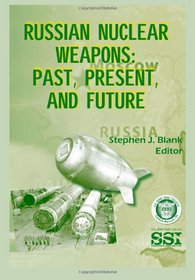Search -
Russian Nuclear Weapons: Past Present and Future
Russian Nuclear Weapons Past Present and Future
Author:
As of November 2010, the so-called ?New START (Strategic Arms Reduction Treaty)? treaty between the United States and Russia that was signed in Prague, Czech Republic, on April 8, 2010, awaits a ratification vote in the Senate. Regardless of the arguments pro and con that have emerged since it was signed, it is clear that the outcome of the rati... more »
Author:
As of November 2010, the so-called ?New START (Strategic Arms Reduction Treaty)? treaty between the United States and Russia that was signed in Prague, Czech Republic, on April 8, 2010, awaits a ratification vote in the Senate. Regardless of the arguments pro and con that have emerged since it was signed, it is clear that the outcome of the rati... more »
ISBN-13: 9781470064174
ISBN-10: 1470064170
Publication Date: 11/1/2011
Pages: 522
Rating: ?
ISBN-10: 1470064170
Publication Date: 11/1/2011
Pages: 522
Rating: ?
0 stars, based on 0 rating
Publisher: CreateSpace Independent Publishing Platform
Book Type: Paperback
Members Wishing: 1
Reviews: Amazon | Write a Review
Book Type: Paperback
Members Wishing: 1
Reviews: Amazon | Write a Review
Genres:




